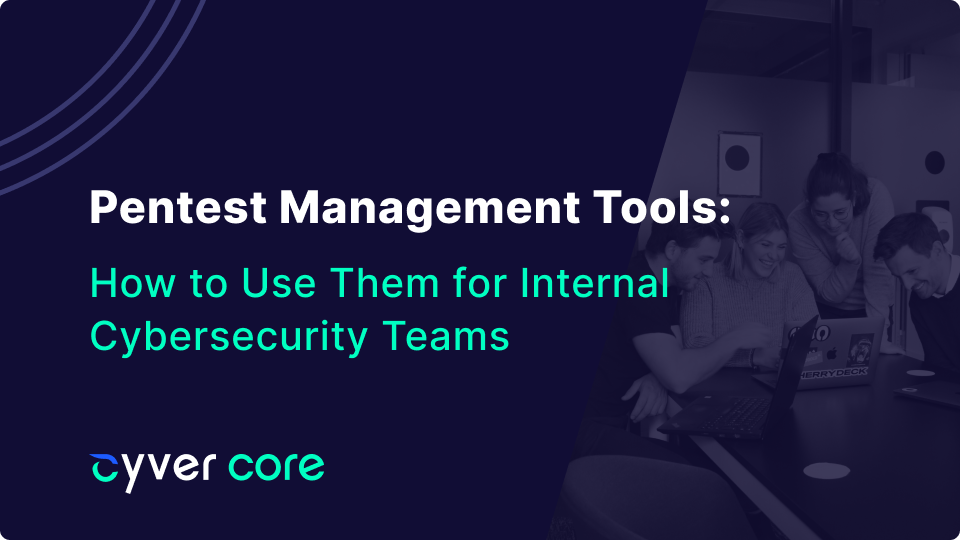Regular pentesting is crucial to maintaining good cybersecurity and for keeping your environment hardened, even with modern development and continuous updates to applications and networks. Internal pentest teams allow even the largest organization to conduct those pentests across all assets with the help of an internal network of pentesters who perform routine testing – and then reach out to third-party testers for audit compliance and for assessing large updates.
Managing that internal pentesting can become complex, especially as you run different types of pentests across different assets, run different tools, and bring new people onto the team. Pentest management platforms like Cyver Core can help with task management, pentest pipelines, work management, and work transparency for quality management.
What is Pentest Management?
Pentest management platforms like Cyver Core use the concept of work management (like Jira), with solutions specifically built around the needs of pentesters and cybersecurity specialists. With project templates, pentest report templates, and even vulnerability libraries built in, pentest management platforms allow you to quickly manage and even automate much of the work of tracking, copy-pasting, and building projects and reports for pentests. And, while most of these platforms are built with the needs of traditional, external pentest teams in mind – they also easily fit into internal pentest teams.
Work Management
Cyver Core offers pentest management tools including calendars, schedules, and kanban boards. Once you onboard the team, you can assign work and then quickly see which pentests are in the pipeline, which stage they are at, and who is responsible. That makes it easier to choose which pentests have to be done and then to stage them based on team availability – so the pipeline remains full without overwhelming the team.
Report Templates & Automation
Building pentest reports often takes 20-40% of the total time of the pentest. But, for internal pentests, they also aren’t often necessary. Cyver Core uses automation to import findings directly from tooling like Nessus and OpenVAS to create tickets – based on your vulnerability libraries – so you can immediately assign those out to stakeholders. And, with exports to Jira, those stakeholders can automatically use those tickets for their own work management platforms. Those tickets can then be pulled into Pentest report templates to automatically generate reports for finance, risk management, or other needs.
Team Management
Pentest management platforms offer team management, where you can invite pentest and stakeholder teams, assign them to roles, and then automatically distribute tasks based on those roles. For example, pentesters receive task lists based on the pentest template and what work is assigned in that template – for example based on scope, compliance norms, etc.
When the pentester uploads findings, stakeholders in the platform receive notifications, can ask questions, and can immediately get to work on remediation.
Transparency
Cyver Core’s process of using assigned tasks, checklists, and pipelines means you can always see what work has been completed, when, and by whom. For example, compliance norm checklists means you get a task list per pentest with the norm attached. The pentester doing the work has to sign off on each task on the checklist and you can see who signed it off. That makes it easier to manage work distribution across teams, to remember whether specific tasks were completed or not, and to offer transparency in case of an audit.
Vulnerability Management
Once you upload vulnerabilities to the platform, you can manage them there. Stakeholders can log in to see open vulnerabilities, which assets they affect, and criticality. For example, Cyver Core tracks metrics like CVSE scores, criticality, time-to-fix and recommended time-to-fix, and vulnerability spread by asset and vulnerability type. This allows teams to prioritize fixes, to notice when remediation slips through the cracks, and to pick up vulnerabilities for remediation before they become critical. It also makes it easier to see frequently recurring vulnerabilities, risk profiles, and relative criticality of risk in a way that can be easily communicated to non-technical teams.
Cybersecurity is important. For organizations with internal teams to handle pentesting, managing those pentests and the resulting vulnerabilities can be a lot of work. Pentest management platforms lighten that workload, automate manual and repetitive tasks, and ensure that you can stay on top of when, where, and why work is completed.
If you’d like to know more, visit our features page, or contact us to request a demo.


